By Adam McVeigh, Research Assistant in the Farmland Ecology Unit
Many people are captivated by the magnificence of butterflies, be it watching Peacocks sipping from a Buddleia or sighting a pristine Brimstone on a sunny morning. This year Painted Ladies have migrated into the news and attracted butterflies, moths and insects some much needed attention. Many of the UK’s butterfly species are suffering serious long-term declines and continued monitoring and improved conservation efforts have never been needed more.
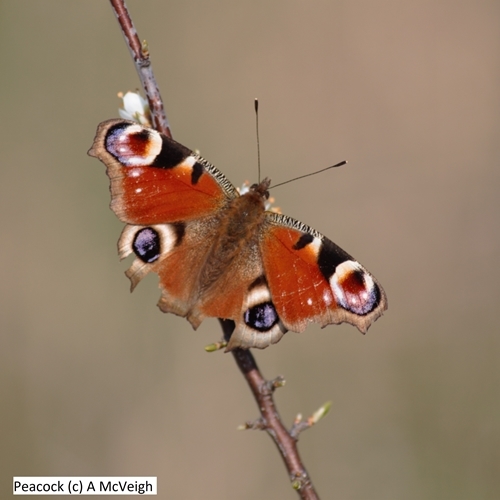
At Rotherfield a series of butterfly transects were undertaken in 2011 and repeated in 2019. The site is intensively managed for game and the surveys of 10 different areas, which can be categorised into woodland rides or meadows, provide an insight into how suitable these habitats are for butterflies.
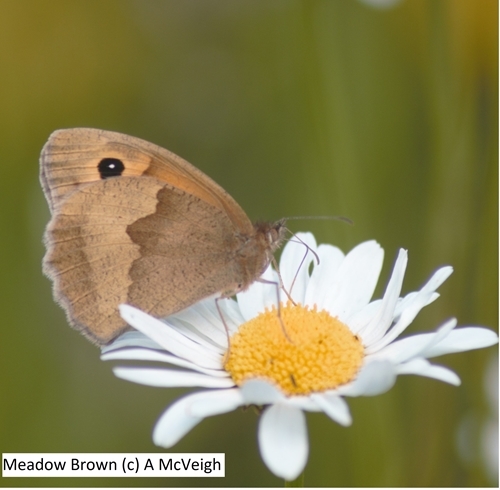
The meadow transects consisted of 4 visits to 3 different sites, amounting to just under 2km (1987m) in transects. The transects in the 7 woodland rides were nearer to 10km (9806m) and were visited 4 times during 2019. In 2011, one visit to 5 of the woodlands was missed and this is taken into account when analysing the transect data.
Transect results show a 40% increase in the number of butterflies recorded (Table 1). Most of this increase came from the Browns which include Speckled Woods and Meadow Browns. The decrease in the number of species recorded is likely due to the 2019 surveys beginning later in the season and missing the flight periods of some spring specialists such as the Grizzled Skipper and Green Hairstreak.

Another positive result is that 27 species of butterfly have now been recorded at Rotherfield. This includes 21 butterflies of the wider countryside and 4 habitat specialists. Grizzled Skipper, Silver-washed Fritillary, Small Blue and White Admiral all have fussy habitat requirements and their presence indicates the potential for Rotherfield to support many of our specialist species.
The increase in the total number of butterflies recorded is encouraging. However comparing two years, which are themselves eight years apart, is always going to limit the impact of any conclusions. Butterfly populations can vary immensely from year to year, with weather conditions playing a huge role, so the total increase needs to be taken with a pinch of salt. On the same note, it is not necessarily doom and gloom for the species which did not fare so well in this year’s count.
The biggest achievement is that we now have butterfly data from more than one point in time which enables us to kick-off the Rotherfield Butterfly Index. This index shows the average number of each species counted per visit to the 12km of transects. As the years go by we will be able to add more and more data to this index to build up a better picture. This will provide us a greater understanding of butterfly populations and their fluctuations at Rotherfield.
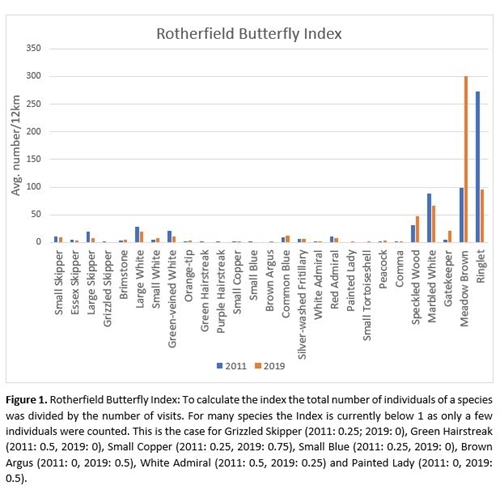
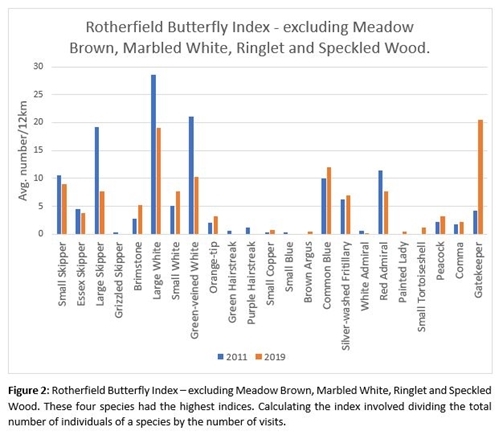
Additionally, this shows us clearly which species have been recorded at Rotherfield in the past. This is important when it comes to specialist species-specific transects where the aim is to confirm the presence of a butterfly. Knowing a species existed helps lepidopterists narrow down potentially suitable habitat in which to search. If presence or presence at a nearby colony within dispersal distance is confirmed, then suitable habitat can be created to enable colonisation. This is a practical and realistic approach to enabling specialists to thrive. For Rotherfield, the list of potential specialists is lengthy.
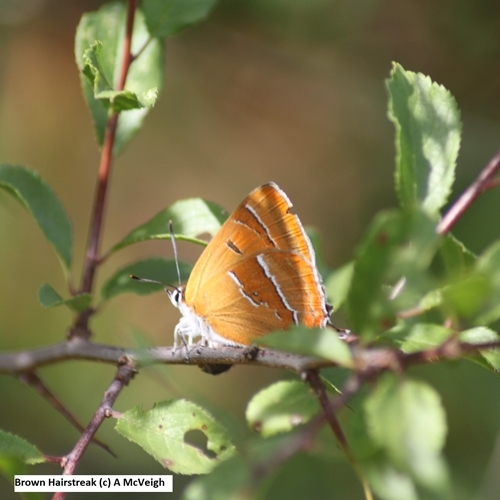
One habitat specialist which could easily colonise Rotherfield is the Brown Hairstreak. This butterfly has a substantial foothold at nearby Noar Hill and has the potential to colonise well-managed Blackthorn hedgerows. I expect to see it on the Rotherfield Butterfly Index in the coming years.
As previously stated, though important to reiterate, butterfly populations are highly variable and will be influenced by weather and the wider landscape. However, there are a couple of indicator species which I use to tell me more about the habitat quality.
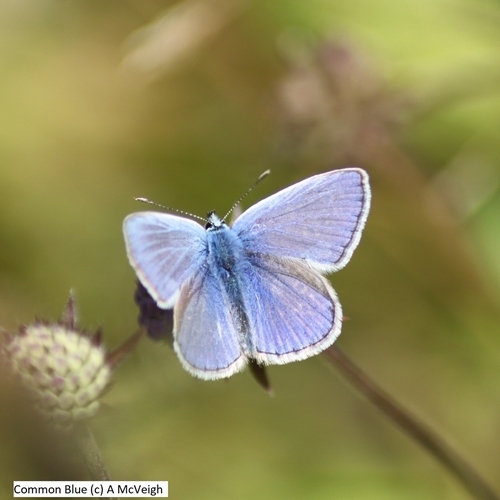
The Common Blue increased 37%, indicating the quality of meadow areas which have abundant Bird’s-foot Trefoil on which the caterpillars of this species feed, and plenty of nectar sources for adults.
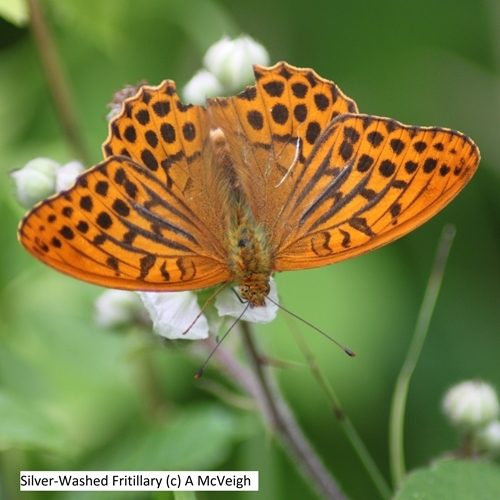
Silver-washed Fritillaries were up 27%, showing the value of the extensive woodland management in place. Males will patrol woodland rides and edges keeping a guard of their territory which houses not only violets but also the right vegetation structure needed to ensure larval development.
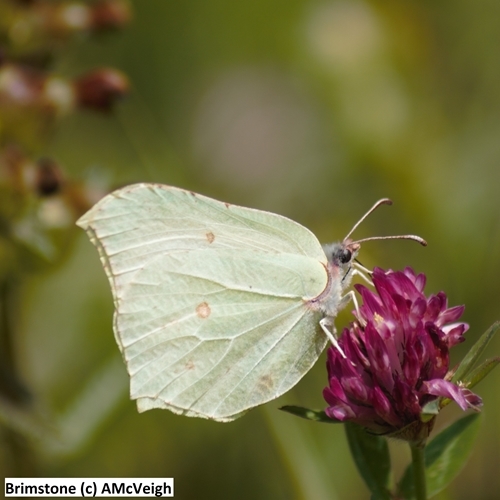
Brimstones had a 110% increase, with good numbers being sighted in each round of transects. The presence of Brimstones indicates the quality of hedgerows. They are quite often seen in spring as they disperse, searching for Buckthorn growing at the edges or out the top of the hedge. Females will lay eggs on suitable sprigs of the Buckthorn and the caterpillars will feast upon its leaves. By the start of the summer Brimstone caterpillars would have pupated and will be emerging as adults. It is the sighting of these beauties throughout the summer which shows that good quality habitat is nearby.
Overall these transects provide a snapshot into the impact that the meadow enhancement and woodland management at Rotherfield is having on butterflies. This effort provides important habitat for a wide range of species and enables several indicator species to thrive.
Looking forward we would be very grateful for any butterfly sightings at Rotherfield to be reported to us, so we can add to the species list and gather a more in depth understanding of how these charismatic insects are using the site. Email any sightings to amcveigh@gwct.org.uk including species, location (grid reference if possible) and any additional information you think is relevant.